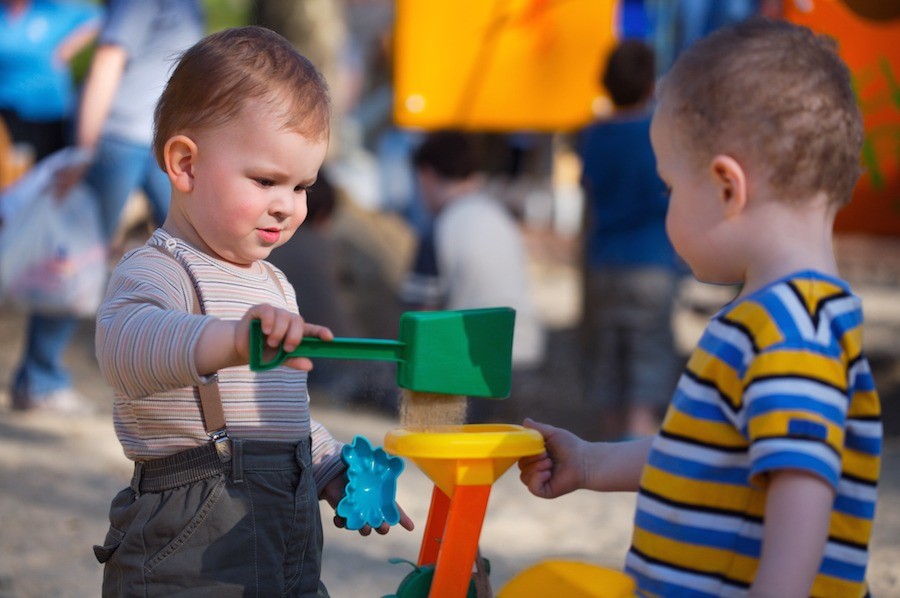- 855.224.8655
- Schedule a Tour

While many children’s milestones take place in the first year, it isn’t until approximately age one that children become increasingly aware of themselves and others. In contrast to infants, toddlers begin to seek out and act upon their social environments. At this age, children are becoming more aware of themselves and other people. They model behaviors of parents, teachers, and other children.
Learning to express emotions, interact positively with others, and develop independence are just a few of the critical skills they learn as toddlers. These are critical years for social-emotional development and lay a foundation for school readiness.
While children develop at their own pace, there are important social and emotional milestones to look for as they learn and grow. Keep track of your child’s progress with these social-emotional milestones.
Social-Emotional Developmental Milestones for Ages One and Two
As toddlers, children become more aware of themselves and their ability to make things happen. They express a wider range of emotions than infants and are more likely to initiate interaction with other people. At this stage, most one and two year olds:
- Recognize themselves in pictures or the mirror and smile or make faces at themselves
- Show intense feelings for parents and show affection for other familiar people
- Play by themselves and initiate their own play
- Express negative feelings
- Show pride and pleasure at new accomplishments
- Imitate adult behaviors in play
- Show a strong sense of self through assertiveness, directing others
- Begin to be helpful, such as by helping to put things away
Milestones for Two and Three Year Olds
At age two, children begin to experience themselves as more powerful, creative “doers.” They explore everything, show a stronger sense of self and expand their range of self-help skills. Self-regulation is a big challenge. Two-year-olds are likely to:
- Show awareness of gender identity
- Indicate toileting needs
- Help to dress and undress themselves
- Be assertive about their preferences and say no to adult requests
- Begin self-evaluation and develop notions of themselves as good, bad, attractive, etc.
- Show awareness of their own feelings and those of others, and talk about feelings
- Experience rapid mood shifts and show increased fearfulness (for example, fear of the dark, or certain objects)
- Display aggressive feelings and behaviors
- Begin to enjoy parallel play
Children at ages two and three enjoy parallel play and engage in solitary activities near other children:
- Watch other children and briefly join in play
- Defend their possessions
- Begin to play house
- Use objects symbolically in play
Learn more about U-GRO Learning Centres’ toddler program, which focuses on classroom experiences designed to meet and exceed social-emotional development milestones. Want to learn more about social-emotional development? Read our blog post on milestones in preschoolers!
